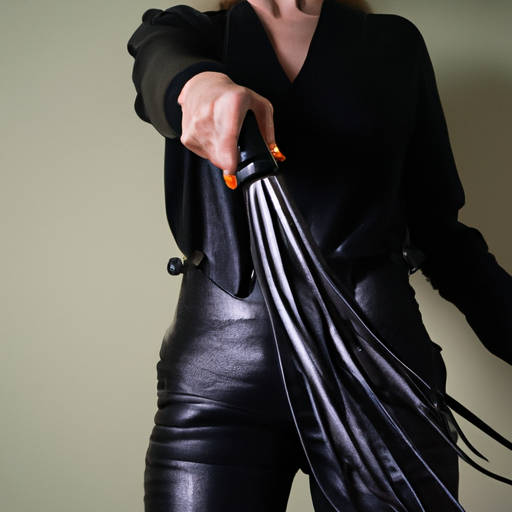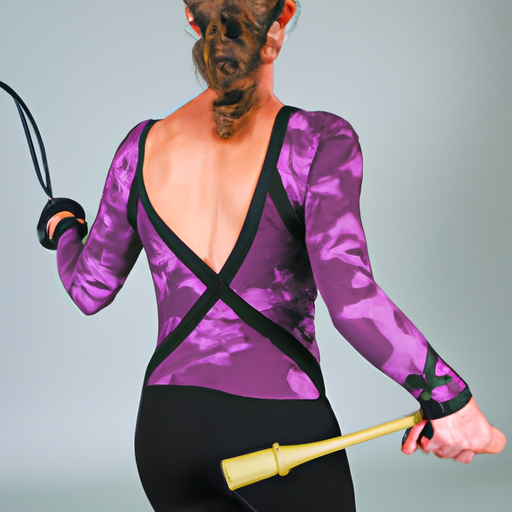How does femdom art use symbolism to convey power dynamics?
Femdom Art: Exploring Symbolism in Power Dynamics

In the vast world of art, there are countless genres and styles that have captivated audiences throughout history. One such captivating genre is femdom art, which delves deep into the exploration of power dynamics through the use of symbolism. This unique form of artistic expression has been both celebrated and controversial, as it challenges traditional notions of gender roles and dominance. In this blog post, we will delve into the world of femdom art and examine how symbolism is utilized to convey power dynamics.
At its core, femdom art is a genre that focuses on female dominance and male submission. It explores the concept of power exchange, where the dominant female partner takes control over the submissive male partner. While this theme may seem unconventional to some, it is important to approach it with an open mind, as art has always been a platform for exploring diverse perspectives and challenging societal norms.
Symbolism plays a crucial role in femdom art, as it allows artists to convey complex power dynamics visually. One common symbol used in this genre is the whip. The whip represents authority, control, and the power to enforce discipline. Through its presence in the artwork, it symbolizes the dominant partner’s ability to assert control over the submissive partner. The visual depiction of the whip serves as a reminder of the power dynamics at play and the boundaries that are established within the relationship.
Another powerful symbol frequently seen in femdom art is the leash. The leash symbolizes ownership and control. It represents the dominant partner’s ability to guide and direct the submissive partner’s actions. By incorporating the leash into the artwork, artists emphasize the power dynamics and the submissive partner’s willingness to submit to the dominant partner’s authority.
Collars are also commonly depicted in femdom art. A collar signifies ownership and serves as a symbol of submission. It is a visual reminder of the submissive partner’s commitment to the dominant partner and their willingness to be controlled. Artists often use collars to highlight the power dynamics within the relationship and the submissive partner’s desire to surrender their autonomy.
In addition to these symbols, clothing choices play a significant role in femdom art. Dominant partners are often depicted wearing leather or latex, which symbolize power, strength, and dominance. These materials are associated with a sense of authority and control, further emphasizing the power dynamics within the artwork. On the other hand, submissive partners are often portrayed in more revealing or vulnerable clothing, symbolizing their surrender and vulnerability in the face of the dominant partner’s power.
It is important to note that femdom art is not limited to heterosexual relationships. The power dynamics explored in this genre can be present in any relationship dynamic or sexual orientation. The symbols used in femdom art transcend gender and serve as visual representations of power dynamics, regardless of the individuals involved.
In conclusion, femdom art is a genre that uses symbolism to convey power dynamics. Through the use of symbols such as whips, leashes, collars, and clothing choices, artists explore the complexities of power exchange and dominance in relationships. While this genre may challenge conventional notions of gender roles, it provides a platform for artistic expression and the examination of diverse power dynamics. By delving into femdom art, we can broaden our understanding of relationships and embrace the complexities of power dynamics that exist in our world. Click here for more.
Can a BDSM collar be used as a form of non-verbal communication within a BDSM scene?
Can a BDSM Collar be Used as a Form of Non-Verbal Communication within a BDSM Scene?

In the world of BDSM (Bondage, Discipline, Dominance, Submission, Sadism, and Masochism), collars hold a significant role. These symbolic accessories serve as a form of non-verbal communication between partners, representing various aspects of power dynamics and commitment within a BDSM scene. While collars have a long history in the BDSM community, it is essential to understand their meaning, purpose, and consent involved before exploring their role further.
First and foremost, it is crucial to emphasize that BDSM practices are based on consensual agreements between all involved parties. Consent is the cornerstone of any healthy BDSM relationship, and it applies to every aspect, including the use of collars. Both the dominant and submissive individuals must explicitly discuss and agree upon the meaning and significance of a collar before incorporating it into their scene.
In many BDSM relationships, a collar is often seen as a symbol of ownership, commitment, and power exchange. Just as a wedding ring symbolizes a commitment in a traditional relationship, a collar signifies the dominant’s ownership and the submissive’s devotion. It establishes a deep level of trust and establishes clear roles within the BDSM dynamic.
Within a BDSM scene, a collar can serve as a non-verbal communication tool, allowing the dominant to convey commands, expectations, and desires to the submissive without the need for explicit verbal communication. This form of non-verbal communication can enhance the power dynamics and intensify the scene’s emotional and psychological impact.
The meaning of a collar can vary greatly from one BDSM relationship to another. Some collars may be worn only during specific scenes or play sessions, while others may be worn consistently as a symbol of the ongoing power exchange dynamic. It is crucial for both partners to discuss and establish clear boundaries and expectations around the use of collars to ensure a safe and consensual experience.
Furthermore, collars can also be used as a form of public display within the BDSM community. In certain settings, such as BDSM clubs or events, wearing a collar can signify one’s role as a submissive or dominant and can indicate availability or unavailability for play. It is essential to note that this is specific to the BDSM community and should not be assumed or interpreted in non-BDSM contexts.
In addition to the symbolic meaning, collars can also have practical aspects within a BDSM scene. Some collars may include attachment points for leashes or other restraints, allowing the dominant partner to physically guide or control the submissive. This physical connection can further enhance the power dynamics and intensify the scene’s overall experience.
It is important to recognize that while collars can be a powerful tool within BDSM scenes, they are not mandatory or required in every dynamic. Every BDSM relationship is unique, and the use of collars should always be consensual and based on the preferences and boundaries of the individuals involved.
In conclusion, a BDSM collar can indeed be used as a form of non-verbal communication within a BDSM scene. These symbolic accessories hold deep meaning and significance, representing power dynamics, ownership, and commitment within the BDSM community. However, it is crucial to prioritize clear communication, consent, and mutual understanding when incorporating collars into a BDSM relationship. Remember, consent and open dialogue are paramount in any healthy BDSM dynamic, ensuring a safe, consensual, and pleasurable experience for all parties involved.